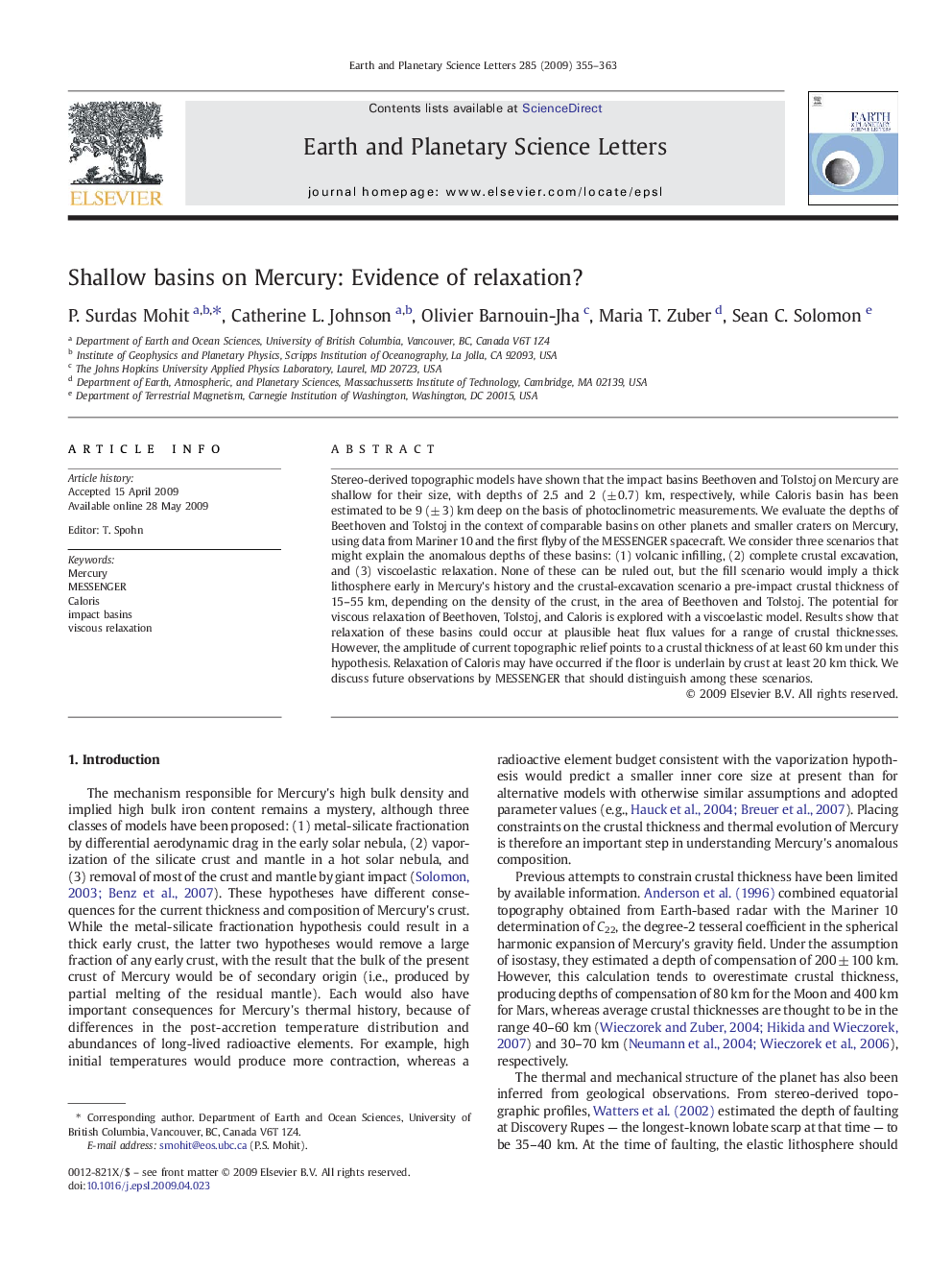| Article ID | Journal | Published Year | Pages | File Type |
|---|---|---|---|---|
| 4678938 | Earth and Planetary Science Letters | 2009 | 9 Pages |
Stereo-derived topographic models have shown that the impact basins Beethoven and Tolstoj on Mercury are shallow for their size, with depths of 2.5 and 2 (± 0.7) km, respectively, while Caloris basin has been estimated to be 9 (± 3) km deep on the basis of photoclinometric measurements. We evaluate the depths of Beethoven and Tolstoj in the context of comparable basins on other planets and smaller craters on Mercury, using data from Mariner 10 and the first flyby of the MESSENGER spacecraft. We consider three scenarios that might explain the anomalous depths of these basins: (1) volcanic infilling, (2) complete crustal excavation, and (3) viscoelastic relaxation. None of these can be ruled out, but the fill scenario would imply a thick lithosphere early in Mercury's history and the crustal-excavation scenario a pre-impact crustal thickness of 15–55 km, depending on the density of the crust, in the area of Beethoven and Tolstoj. The potential for viscous relaxation of Beethoven, Tolstoj, and Caloris is explored with a viscoelastic model. Results show that relaxation of these basins could occur at plausible heat flux values for a range of crustal thicknesses. However, the amplitude of current topographic relief points to a crustal thickness of at least 60 km under this hypothesis. Relaxation of Caloris may have occurred if the floor is underlain by crust at least 20 km thick. We discuss future observations by MESSENGER that should distinguish among these scenarios.
